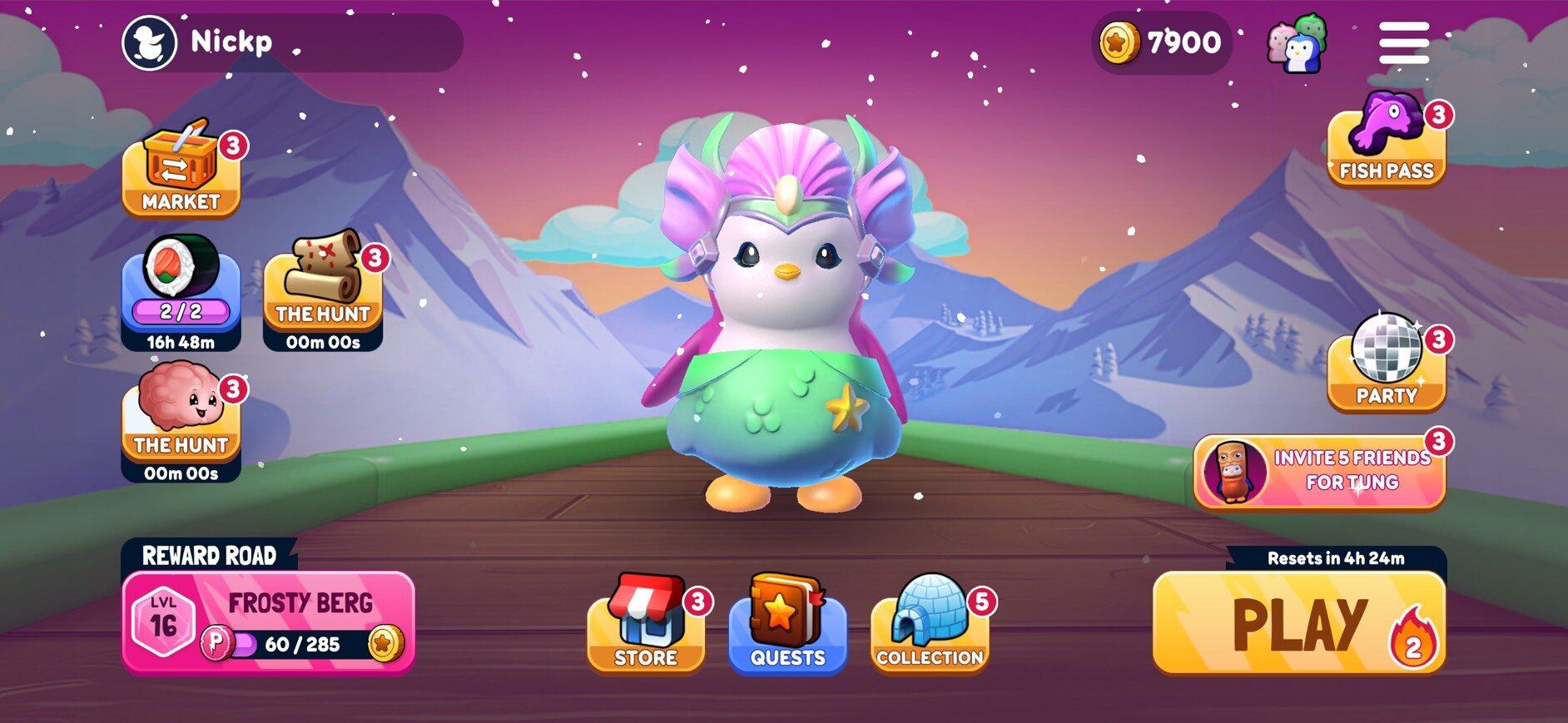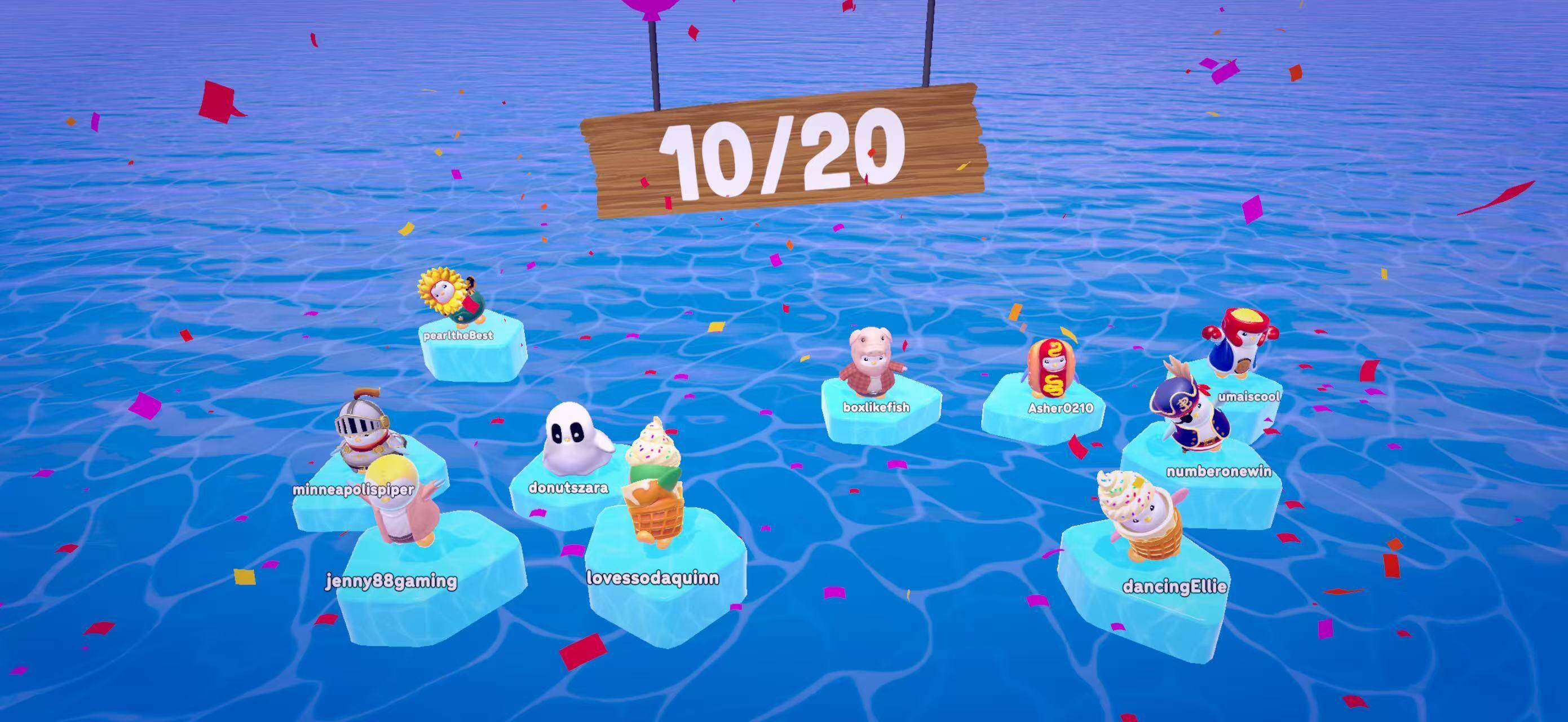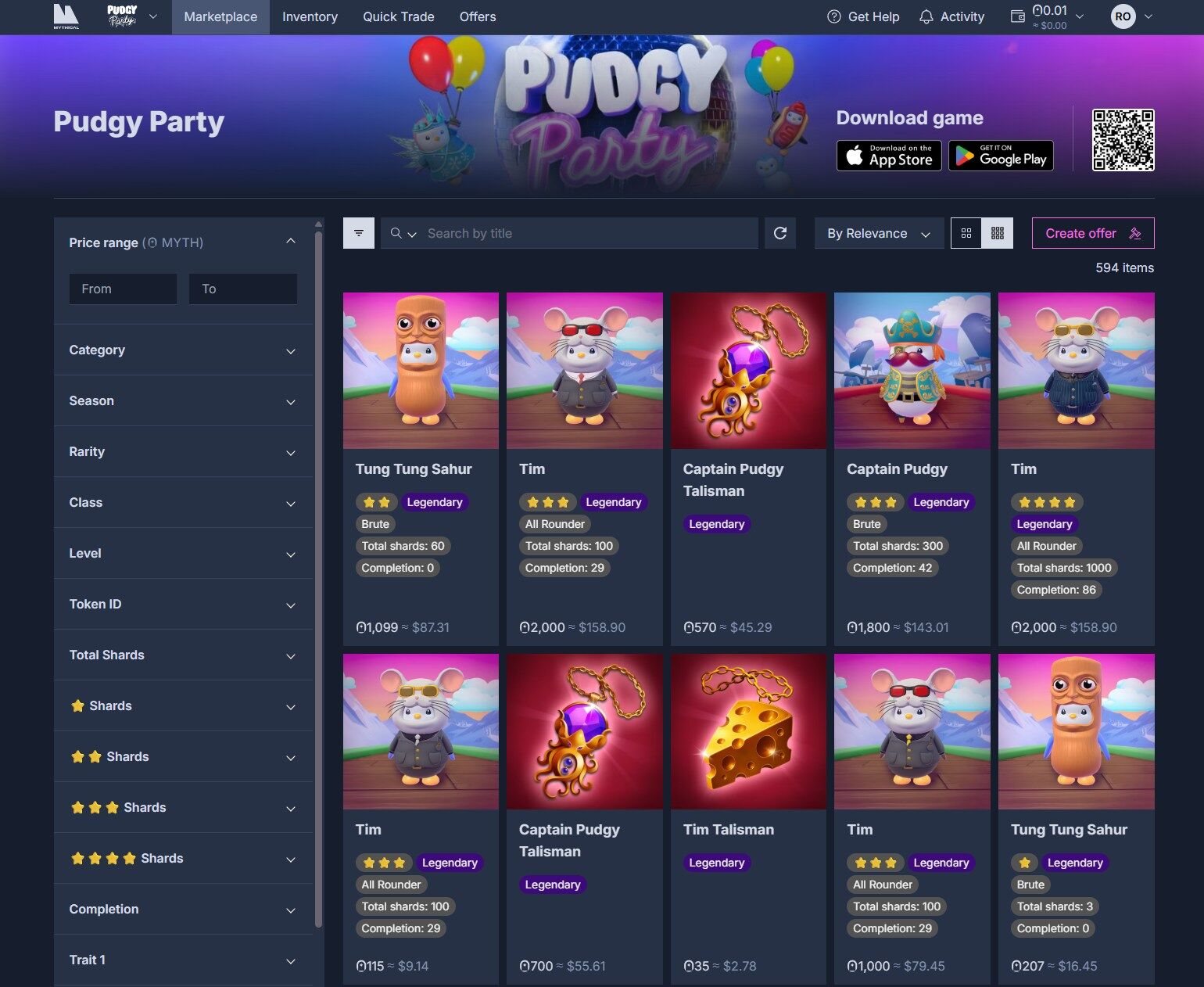Original | Odaily Planet Daily (@OdailyChina)

On August 30, the popular NFT project Pudgy Penguins officially launched a new mobile game, Pudgy Party, which is now available on the App Store and Google Play. Shortly after its release, the game surged into the top ten of the free games chart, quickly becoming a focal point of attention both within and outside the community.

Pudgy Party game main interface
Pudgy Party Gameplay Overview
Pudgy Party is a Web 3 mobile game co-created by Pudgy Penguins and the Web 3 game studio Mythical Games (game download link: bit.ly/pudgyparty).

Pudgy Party game tutorial interface
The game features a relaxed and casual multiplayer obstacle course gameplay, where 20 players control cute penguins to compete on randomly generated tracks filled with obstacles like spinning hammers, moving platforms, and collapsing floors, aiming to be the last one standing amidst the chaos of collisions and pushes. Each game consists of three rounds, ultimately determining a champion. The gameplay is simple and fun, with adorable skin and action expression designs.

Pudgy Party game interface
The playability of Pudgy Party is reflected in several details. In Pudgy Party, players do not need to worry about ranks or competitive pressure; the leveling system is only used to unlock various cute penguin skins and quirky actions, and it does not affect user matching with other players. Even if eliminated in the first round, players will not leave empty-handed; the system rewards experience points and costume fragments, and playfully pops up a message saying “Better luck next time,” accompanied by a silly little penguin expression that is sure to make players laugh. Additionally, users can leave the game at any time without any penalties and do not need to spend time studying complex upgrades or grinding for resources. The overall game pace is relaxed and smooth, with each penguin collision, being pushed off a bridge, or accidentally falling creating a sense of participating in a joyful penguin brawl.

Pudgy Party game interface
Although it does not directly showcase NFT or token rewards, the game still has gold mining attributes
Pudgy Party appears to be a light-hearted party game in terms of gameplay, without directly displaying NFT or token rewards, but in reality, the game can still facilitate gold mining:
- Limited Edition Costume Trading: The game features two types of items: regular costumes and limited edition costumes, with the latter having collectible value due to their scarcity. Players can obtain these costumes by completing levels, accumulating experience points, or participating in events, and then trade them in external markets for economic benefits.
- Backend On-chain Wallet: Each player automatically has a wallet based on Mythos Chain generated in the game backend. Although players cannot directly view the address or operate it, this lays the groundwork for future integration of PENGU tokens or NFT rewards, allowing core players to potentially gain benefits through these mechanisms.

Pudgy Party secondary trading market
It is worth noting that several players have reported that withdrawing from Mythical Market is not convenient; it requires additional registration for an Uphold exchange account and must complete identity verification (KYC), making the entire process relatively cumbersome.
While there is potential for gold mining, the fun of Pudgy Party largely relies on its replication of the popular Web 2 game "Egg Party." In other words, the game itself lacks originality and unique gameplay, leaving its long-term appeal and player retention uncertain.
How far can Pudgy Party go by replicating "Egg Party"?
The core gameplay of Pudgy Party closely mirrors the hit Web 2 game "Egg Party" from NetEase, essentially being a replication of a mobile multiplayer party racing game. At first glance, this model is easygoing and fun, capable of attracting players' attention in the short term, but the history of blockchain games tells us that mere replication of gameplay is not enough to sustain long-term success. Numerous similar cases exist; for instance, Heroes of Mavia copied the gameplay of "Clash of Clans," but due to an unstable economic model and unsustainable gold mining system, player activity quickly declined, leading to eventual obscurity.

Egg Party game interface
For Pudgy Party, such doubts also exist:
- Insufficient Gameplay Innovation: Relying solely on replicating the Web 2 model, the game lacks core mechanisms and differentiated features. Why would players stay in the game long-term?
- Incomplete Economic Model: Without a mature gold mining or reward system, what will sustain user incentives? Can short-term popularity be converted into long-term community activity?
- Retention Risks: While download numbers and activity may be high in the short term, once players discover repetitive gameplay or limited rewards, interest can easily wane.
Relying solely on fun and initial popularity raises the question of whether it can avoid the historical pitfalls of blockchain games, such as "player loss after the hype and collapse of the economic model."
The Difference of Pudgy Party: IP and User Expansion
Although Pudgy Party mobile game has "replication suspicions," it has a key difference from previous blockchain games: Pudgy Penguins possesses real and continuously spreading IP influence.
Over the past year, plush toys of the little penguin have been hot sellers at Walmart, and social media memes have widely circulated, allowing Pudgy Penguins to gradually transcend the NFT circle and become a brand image that can communicate with the public. A series of events this year further prove the unique position of this penguin in the industry and traditional finance:
- As early as April "World Penguin Day," institutions like MetaMask, Uniswap, Magic Eden, and Binance.US lined up to promote Pudgy Penguins.
- In July, major crypto companies like Coinbase, OpenSea, MoonPay, and OKX collectively changed their avatars to Pudgy Penguins, sparking market excitement and driving up the NFT floor price and PENGU token.
- Even on Nasdaq, VanEck rang the opening bell with Pudgy Penguins, with CEO Luca stating, “Pudgy Penguins is the face of crypto.”
This influence is not just a meme-like frenzy; it is also an expression of industry stance, indicating that Pudgy Penguins has become part of the Web 3 community consensus. With perceivable IP value, Pudgy Party can easily attract Web 2 players and establish long-term user engagement and brand recognition, even without relying on complex economic models.
Is "Fun" or "Gold Mining" More Important in Web 3 Games?
Pudgy Party also prompts a reconsideration of a key question: Should the essence of Web 3 games be to be sufficiently fun, even innovating gameplay compared to Web 2 games, or to have an extremely well-developed gold mining model that allows everyone to continuously earn money?
If we only emphasize "fun," then Web 3 games are no different from Web 2 games, and in the short term, it is difficult to surpass the production level of major Web 2 companies. Why would players choose blockchain games?
If we only emphasize "gold mining," after a short-term wealth effect, with insufficient new players and declining returns for old players, it ultimately leads to a death spiral, with players simply turning to the next blockchain game that is about to TGE or has short-term "explosive profit" potential.
Perhaps the answer lies in a dynamic balance between the two. Although, in the short term, the launch of the Pudgy Party mobile game has not fundamentally changed the landscape of Web 3 games, it at least provides a new perspective:
- The game itself must be sufficiently fun to attract non-crypto users;
- IP can help break through community barriers, preventing the project from being limited to blockchain game players;
- Gold mining attributes need to be controlled within a reasonable range, avoiding becoming a Ponzi scheme while providing additional benefits to the core group.
In the tug-of-war between "fun" and "gold mining," Pudgy Party is not the endpoint but rather an exploration in the evolutionary process of the blockchain game industry. It shows that Web 3 games do not have to be black or white, but can find a balance among different stages and user groups.
Unlike most blockchain games, the biggest variable added by Pudgy Party is the power of IP. This may be the key to attracting Web 2 players and breaking through the barriers of the crypto community. Compared to purely relying on token incentives, the emotional connection and user base that IP inherently possesses provide the game with a longer-term external traffic source, giving it the opportunity to break out of the "internal cycle."
Perhaps the truly successful Web 3 games in the future will not simply replicate the entertainment logic of Web 2, nor rely on the illusion of wealth from Ponzi schemes, but will deeply integrate "fun," IP value, and "on-chain incentives," allowing users to immerse themselves while also experiencing the unique benefits that blockchain offers.
免责声明:本文章仅代表作者个人观点,不代表本平台的立场和观点。本文章仅供信息分享,不构成对任何人的任何投资建议。用户与作者之间的任何争议,与本平台无关。如网页中刊载的文章或图片涉及侵权,请提供相关的权利证明和身份证明发送邮件到support@aicoin.com,本平台相关工作人员将会进行核查。




